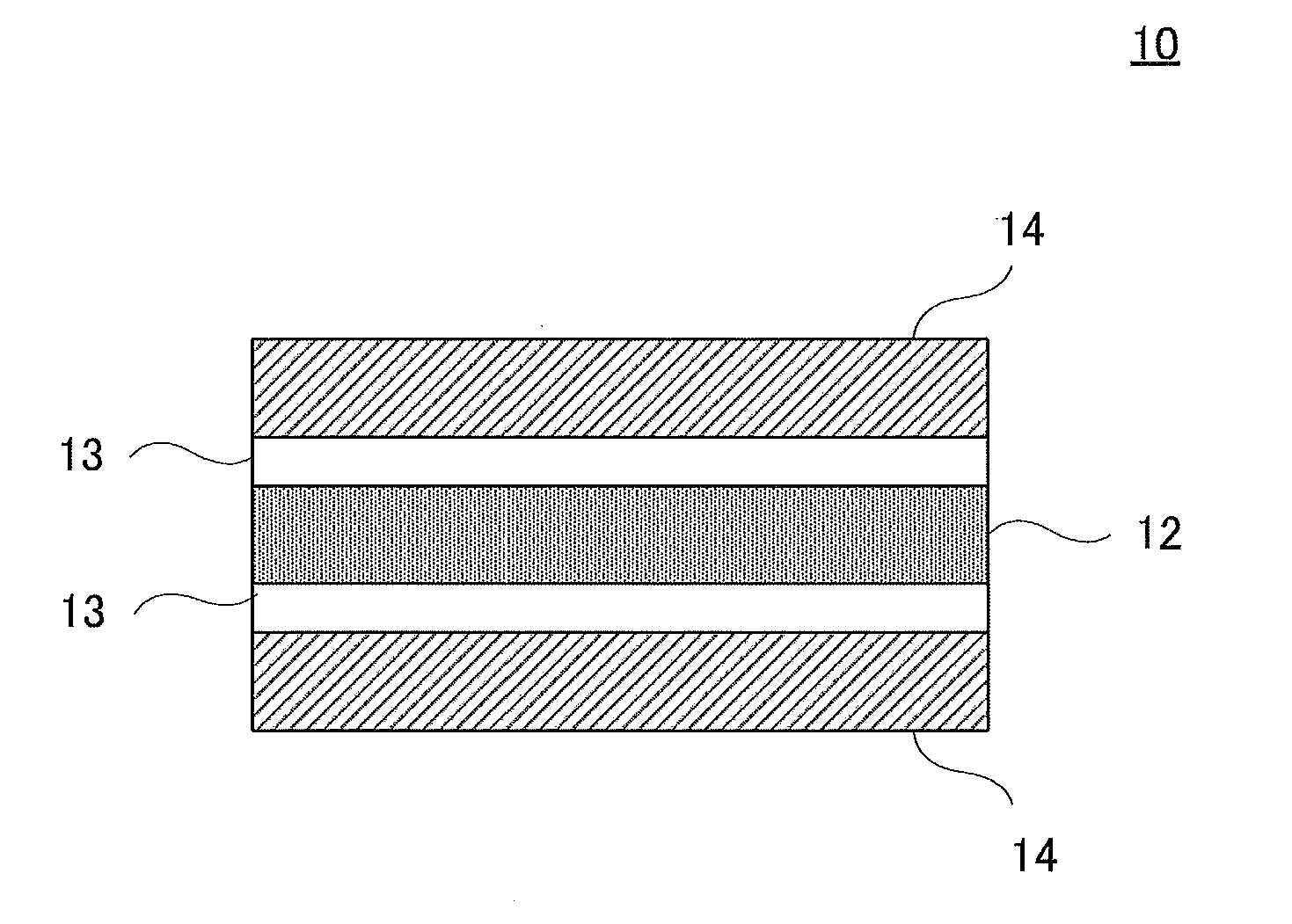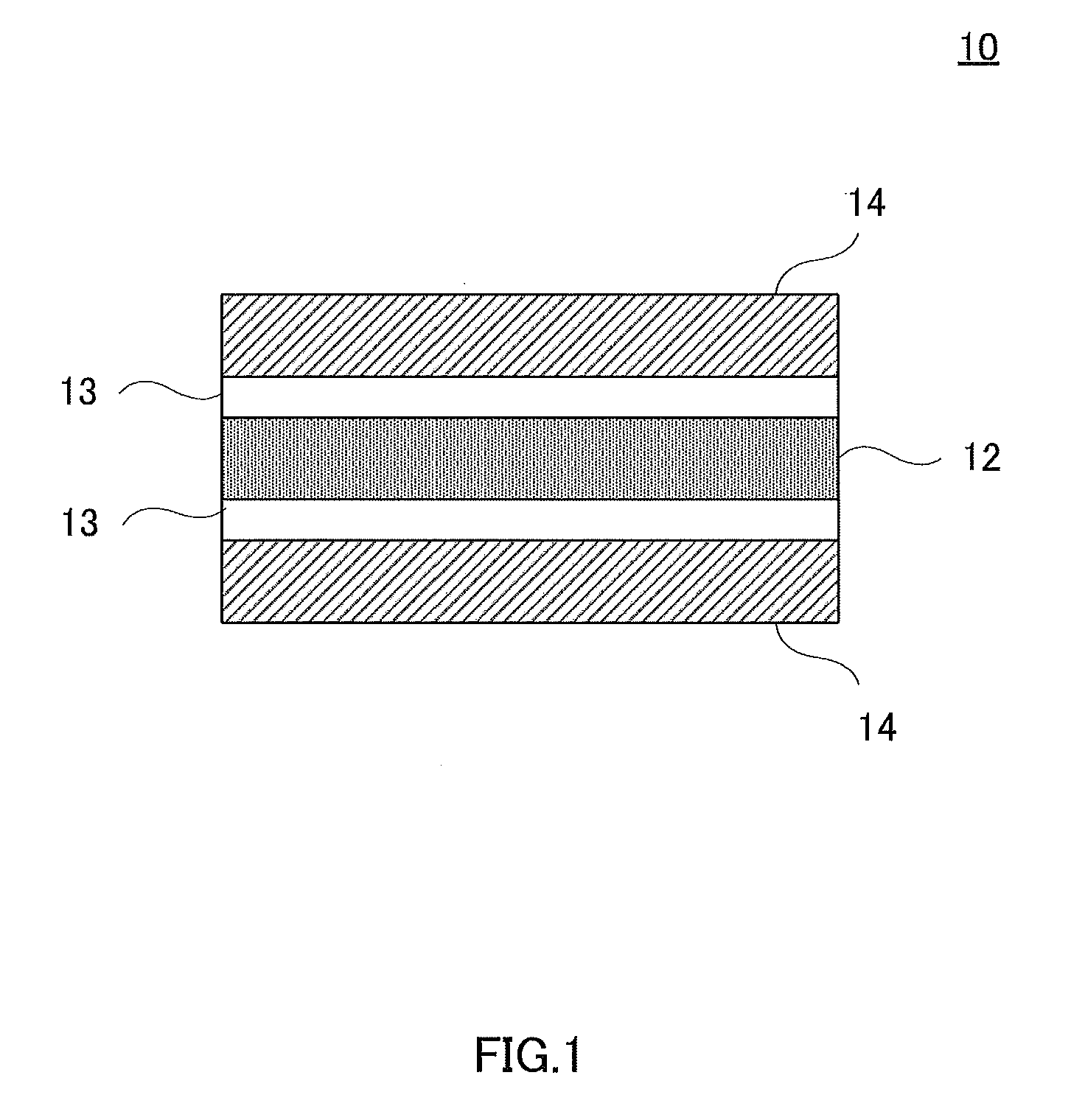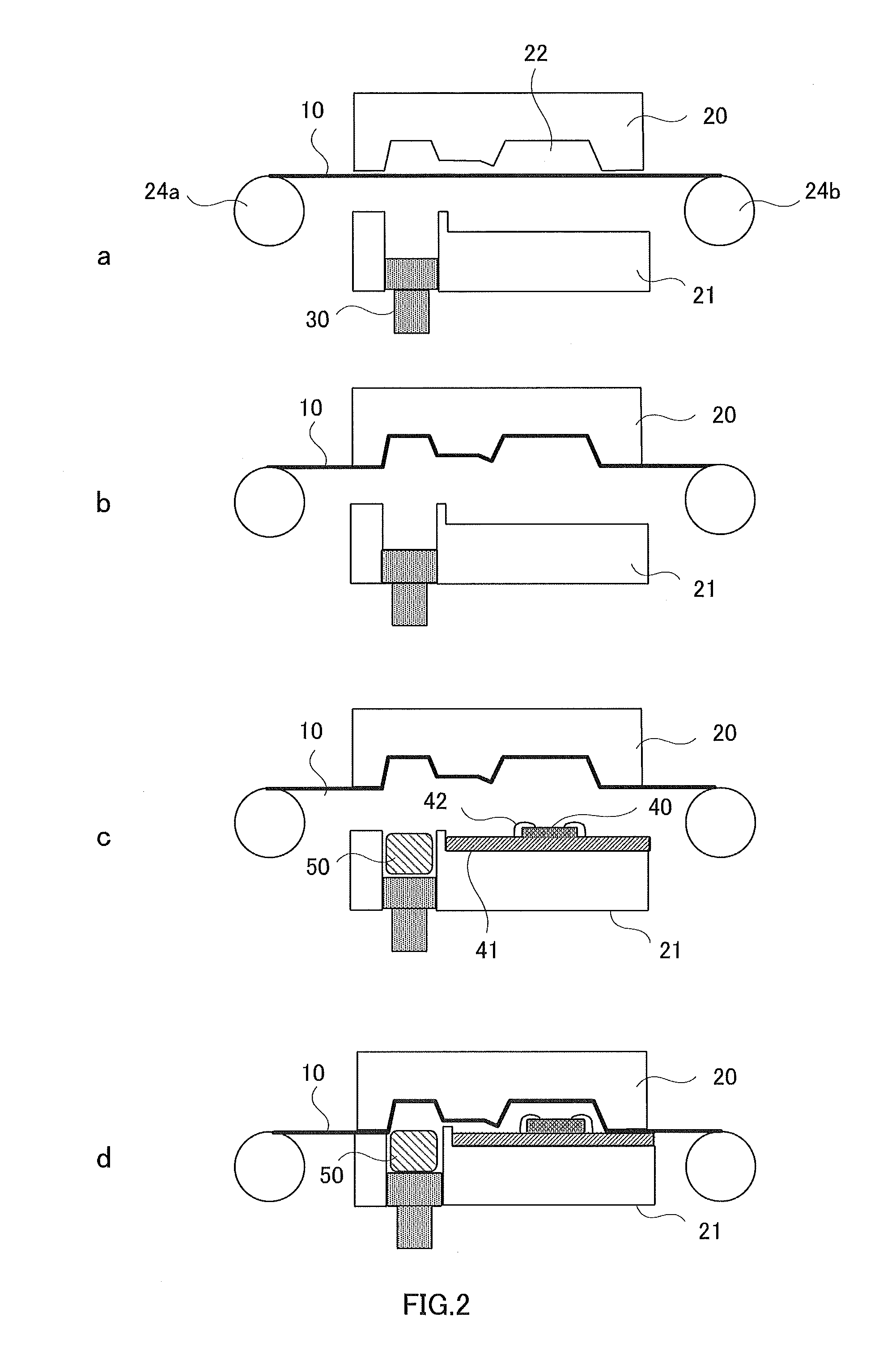Mold release film for manufacturing semiconductor resin package and semiconductor resin package manufacturing method using same
a semiconductor resin and release film technology, applied in the direction of synthesized resin layered products, light beam reproducing, instruments, etc., can solve the problems of reducing work efficiency, shortening mold life, increasing the likelihood of generating burrs on etc., to improve the releasability of the semiconductor resin package, reduce the likelihood of warpage and wrinkles, and improve the effect of dimensional accuracy
- Summary
- Abstract
- Description
- Claims
- Application Information
AI Technical Summary
Benefits of technology
Problems solved by technology
Method used
Image
Examples
example 1
[0133]The above-described raw layer materials were co-extruded with a T-die molding machine to manufacture a non-stretched mold release film of 400 mm width. The mold release film had a 5-layer structure consisting of three different layers: A-1 / B-1 / C-1 / B-1 / A-1, wherein their thicknesses were 15 μm / 5 μm / 25 μm / 5 μm / 15 μm, respectively (total thickness=65 μm).
[0134]As illustrated in FIGS. 2a to 2d, obtained mold release film 10 was placed between upper mold 20 and lower mold 21. The depth of cavity 22 defined by upper mold 20 and lower mold 21, as measured from the mold parting surface, was 0.8 mm at the deepest point. The tensile applied to mold release film 10 by film feeding device 24a and film take-up device 24b was adjusted to a tensile strength of 1 MPa.
[0135]Mold release film 10 was then secured to the parting surface of upper mold 20 by vacuum suction as illustrated in FIG. 2b. Semiconductor chip 40 fixed to board 41 was placed onto lower mold 21 (see FIG. 2c), and then upper ...
example 2
[0169]Mold release film 10 was manufactured as in Example 1 except that the combination of layer thicknesses was set to 10 μm / 5 μm / 15 μm / 5 μm / 10 μm (total thickness=45 μm). Semiconductor resin package 61 was then manufactured using mold release film 10 and evaluated as in Example 1.
example 3
[0170]Mold release film 10 was manufactured as in Example 1 except that the combination of layer thicknesses was set to 10 μm / 5 μm / 20 μm / 5 μm / 10 μm (total thickness=50 μm). Semiconductor resin package 61 was then manufactured using mold release film 10 and evaluated as in Example 1.
PUM
| Property | Measurement | Unit |
|---|---|---|
| total thickness | aaaaa | aaaaa |
| melting points | aaaaa | aaaaa |
| melting point | aaaaa | aaaaa |
Abstract
Description
Claims
Application Information
 Login to View More
Login to View More - R&D
- Intellectual Property
- Life Sciences
- Materials
- Tech Scout
- Unparalleled Data Quality
- Higher Quality Content
- 60% Fewer Hallucinations
Browse by: Latest US Patents, China's latest patents, Technical Efficacy Thesaurus, Application Domain, Technology Topic, Popular Technical Reports.
© 2025 PatSnap. All rights reserved.Legal|Privacy policy|Modern Slavery Act Transparency Statement|Sitemap|About US| Contact US: help@patsnap.com



